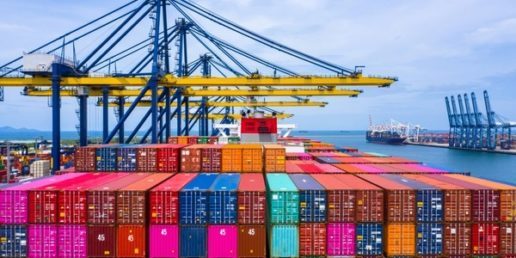
The ports of Long Beach and Los Angeles are assessing a surcharge to ocean carriers for import containers that remain on marine terminals for extended periods, creating congestion and a record volume of cargo at ports.
The new port policy charges ocean carriers for each container that is stagnant at the port. The carriers will be charged if containers remain at the ports for nine days or more if the containers will be moved by truck. The carriers will be charged for containers that have been at the ports for three days or more if they are to be transported by railroad.
The charges will begin Nov. 1 and will be $100 per container, increasing in $100 increments per container per day.
“We must expedite the movement of cargo through the ports to work down the number of ships at anchor,” said Gene Seroka, Port of Los Angeles executive director. “Approximately 40% of the containers on our terminals today fall into the two categories. If we can clear this idling cargo, we will have much more space on our terminals to accept empties, handle exports and improve fluidity for the wide range of cargo owners who utilize our ports.”
However, some retailers expressed concern the fines would be passed onto them.
The “decision to apply new surcharges does not resolve our ever-worsening supply chain crisis and we fear carriers will see this as another opportunity to stick shippers with the bill on top of already massive freight costs,” said Stephen Lamar, president of the American Apparel and Footwear Association.
“Key issues such as chassis availability and empty container returns still need to be addressed,” the National Retail Federation stated. “We encourage ocean carriers to continue to work with importers and truckers to move cargo as quickly as possible and not just pass along the cost of the fee, which will further exacerbate the problems.”
Port of Long Beach Executive Director Mario Cordero said terminals are running out of space and there is an escalating backlog of ships off the coast.
“We must take immediate action to prompt the rapid removal of containers from our marine terminals,” Cordero said.
Before the pandemic-induced import surge began in mid-2020, on average, containers for local delivery sat on container terminals under four days, while containers destined for trains dwelled less than two days. Those numbers have increased significantly, making it difficult to clear cargo off the terminals and bring in ships at anchor.
White House Press Secretary Jen Psaki told reporters that the Los Angeles and Long Beach ports are moving 19% more containers compared with the same time period in 2018, the previous record. She said the ports are on target to break the previous record of 17.5 million containers processed in a year.
“We are continuing to press on ways to address issues in the supply chain,” she told reporters. “Some are at ports, some are at rails, some are at limited drivers, etc.”




